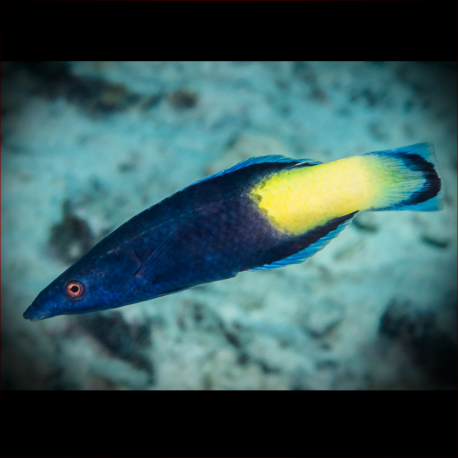More info
Datasheet
| Minimum Tank Size | 1000 litres / 264.17 US gallons |
| Maximum Size | 15.0cm / 5.91inches |
| Reef Compatible | Always reef safe |
| Temperament | Mostly peaceful but might be aggressive towards similar species of same gender |
| Temperature | 22.2°C / 71.96°F - 25.6°C / 78.08°F |
| Specific Gravity | 1.020-1.025 |
| Carbonate Hardness | 8-12 |
| pH | 8.1-8.4 |
General Description: The Bicolor Cleaner Wrasse, scientifically known as Labroides bicolor, belongs to the Labridae family and hails from the East African coast to the Line, Marquesan, and Society islands in the Indo-Pacific region. These fish, common in reef aquaria, are highly beneficial for marine tanks as they feed on various unwanted invertebrates like flatworms and pyramide snails. They are hermaphroditic in nature, capable of changing gender from female to male as needed.
Aquarium Suitability: Considered suitable for experienced aquarists, the Bicolor Cleaner Wrasse requires extra care and preparation due to its fastidious nature. It is suggested to introduce them with specialized food and ensure they are eating sufficiently, as they can be challenging to feed in captivity. These colorful wrasses need a minimum tank size of 1000 liters and thrive well when kept in pairs, provided they are introduced simultaneously.
Care and Hardiness: With an average hardiness level, these wrasses are mostly peaceful but can display aggression towards similar species of the same gender. They have specific water condition requirements, preferring a pH range of 8.1-8.4, a temperature between 22.2-25.6°C, and a specific gravity of 1.020-1.025. Feeding these wrasses several times a day, especially upon introduction, is vital for their well-being.
Reef Suitability: Known to be reef safe, the Bicolor Cleaner Wrasse is a great addition to reef aquariums, contributing to the overall health of the ecosystem by removing parasites from other fish. While they do not significantly impact large outbreaks of marine ich, they play a crucial role in keeping fish parasite-free. However, constant cleaning behavior can stress fish, so caution is advised when adding them to already weakened fish populations.
Aquarium Setup: Setting up the tank for Bicolor Cleaner Wrasses should include ample hiding spots among rocks for them to sleep in their mucous cocoon. Providing live food initially can help in acclimating them to frozen foods. It is essential to monitor their feeding habits closely, ensuring they are consuming an adequate amount of food to thrive in captivity.
Behavior: These wrasses exhibit interesting behavior by forming pairs or living alone, with two males being incompatible due to territorial aggression. Understanding their behavior patterns and social dynamics is crucial when keeping them in aquariums to prevent conflicts and ensure their well-being.
Feeding and Diet: The recommended diet for Bicolor Cleaner Wrasses includes parasites, which are crucial for their nutrition and survival. They feed on various invertebrates and are known for their meticulous cleaning behavior, making them valuable additions to a marine aquarium in maintaining fish health.
Habitat and Distribution: In the wild, Bicolor Cleaner Wrasses inhabit the waters from East African coast to the Line, Marquesan, and Society islands in the Indo-Pacific region. Their natural habitat ranges from Australia to Japan, Indonesia, and the Central/West Pacific, where they contribute to the ecosystem by removing parasites from other fish species.

